Costa Rica
Country statistics
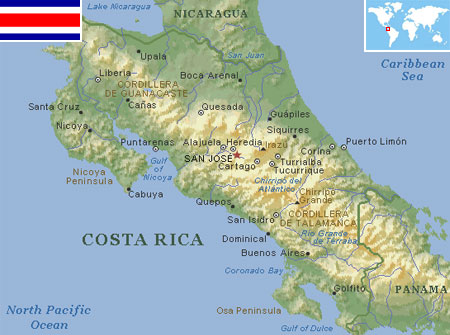
Land area: 19,560 sq miles (50,660 sq km)
Total area: 19,730 sq miles (51,100 sq km)
Population (2010 est.): 4,516,220 (growth rate: 1.3%); birth rate: 16.6/1000; infant mortality rate: 9.7/1000; life expectancy: 77.5; density per sq km: 82
Capital City: San José
Monetary unit: Colón
Languages: Spanish (official), English
Ethnicity/race: white (including mestizo) 94%, black 3%, Amerindian 1%, Chinese 1%, other 1%
Religions: Roman Catholic 76%, Evangelical 14%, Jehovah's Witnesses 1%, other Protestant 1%, other 5%, none 3%
Country introduction
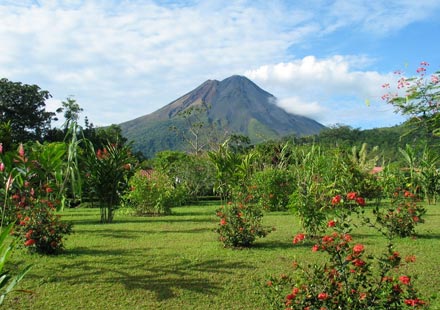
Costa Rica, meaning "rich coast" in Spanish, is a country in Central America, bordered by Nicaragua to the north, Panama to the south-east, the North Pacific Ocean to the west, and the Caribbean Sea to the east.
Costa Rica can be divided into four major topographic areas, the highlands, the tropical rainforest, the Pacific coast and the Caribbean coast.
The highlands consists of a mountain chain that runs through the center of Costa Rica from Nicaragua to Panama. Over half of Costa Rica's population lives in the highlands. The soil is very fertile due to past volcanic activity. San José, the capital, is the largest city in the region, and the country, with about one million people living in the metropolitan area. One of the most famous and most active volcanoes in the mountain chain is Mt. Arenal in Northern Costa Rica.
The tropical rainforest is found in the lowlands on either side of the mountain chain. Costa Rica's tropical forests have over 1400 tree species and provide a variety of habitats for the country's fauna including numerous types of monkeys, sloth, armadillos, jaguars and tapirs. There are also a number of breathtaking butterflies. National parks cover almost 12% of the country. Combined with rainforest reserves and Indian reservations, about 27% of Costa Rica is protected land. The tropical forests of Costa Rica include rainforests and dry forests, each with its own unique flora and fauna.
The west coast borders the Pacific Ocean. The Pacific coast is much more rugged and rocky. Thanks to a number of gulfs and peninsulas, the coastline is also much longer at 1,016 km (630 miles) long. The west coast of Costa Rica is dotted with world famous surf spots and national parks. Some of the better known spots are Playa Tamarindo and Parque Nacional Santa Rosa in the north and Parque Nacional Corcovado in the south.
The east coast runs along the Caribbean Sea. The warm waters of the Caribbean are home to mangroves, swamps and sandy beaches. Many rivers that flow down the mountains filter out to the Caribbean Sea and the openings to the Sea are full of marine life, including crocodiles. The Caribbean coast of Costa Rica is 212 km (131 miles) long. Puerto Limón is one of the most popular tourist destinations in the region and there are some well known surfing spots.
The culture
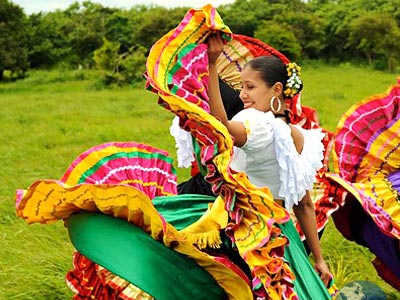
Although Costa Rica was inhabited since about 5000 BC by the Incas from South America and the Aztecs from North America, Costa Rican culture had been predominantly influenced by Spain, who conquered the country in the 16th century. The regions of Limón and the Cordillera de Talamanca are the exception with the predominance of Black Jamaicans and indigenous people, who mostly came from Jamaica and China for the construction of the Atlantic Railway. Christopher Columbus discovered and named the country Costa Rica in 1502, which meant "rich coast" as he believed the land to be filled with precious metals.
Costa Ricans are proud to have had more than a century of democratic tradition and more than 50 years without a military. This was abolished in 1948, and the money that the country saves from not having armed forces is invested in improving the quality of life of its citizens, with free and compulsory education in elementary and high schools and several health centers ruled by the State. This contributes to the social peace that makes Costa Rica a welcoming place to visit.
The festivals and cultural events of Costa Rica reflect the nations various ideologies and hopes, as well as wishes, worries and emotions of the population. They are based on important community activities, for example the festival of seed and harvest is celebrated by the indigenous communities. Some of these events serve as an opening for important buildings for the community such as a church, school or a community hall. Others are held on determined dates of the year, in memory of significant events, civil and religious. For example the Independence Day is celebrated in honor of a patron saint, the Blessed Virgin or other saints. During these public festivals, the mingling of cultures in Costa Rica can be observed in the folk music, food stalls and colorful parades that include oxcarts decorated with icons, adults and children wearing typical traditional costumes, figures made of papier-mâché that picture devils and other mythical creatures, fireworks and games where one can prove courage and endurance, and many more.
The National Symphonic Orchestra of Costa Rica, founded more than six years ago, is one of the most recognized in America. Besides this, tropical music has a privileged place in the taste of Costa Ricans, fitting their enthusiasm for dancing. The rhythms of salsa, meringue and the reggae are appreciated in many public and commercial places around the country. In the field of the scenic arts, the theatrical activity of the country is very dynamic. There is the National Theater Company and the professional career is taught in two state universities, in several private institutions and in the National Theater Workshop.
The most played sport in Costa Rica is 'futbol' (soccer). The National Selection has been in three World Championship, Italia 1990 (position number thirteenth), Korea-Japan 2002 (position number nineteenth) and recently, Germany 2006 (position thirty-first). The First Division of Football consists of 12 teams.
Attractions & landmarks
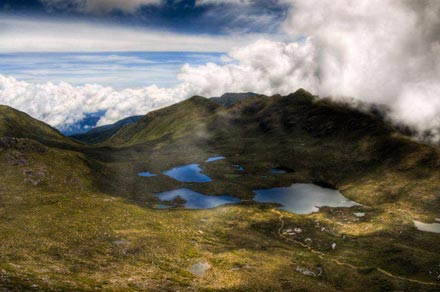
Costa Rica is one of the finest countries in Central America for wildlife, and its world-class parks and reserves offer exceptional biodiversity and enshrine a proud heritage of conservation. Costa Rica's mere 32,186 sq km (20,000 sq miles) of land encompass 12 biodiversity zones, more than 850 species of birds, 200 mammals and 35,000 species of insects. More than 25% of the land is protected by 161 national parks preserving natural attractions such as volcanoes, while providing a refuge for wildlife, which include monkeys, sloths, ocelots, anteaters, coatsis, agoutis, caimans, iquanas, numerous species of snakes, tree frogs, tapirs, buterflies and wild cats as well as an amazing assortment of insects and other animals. Some of the popular national parks in Costa Rica include the Barra Honda National Park which consists of Pre-Columbian limestone caves, the Corcovado National Park which is considered to be the most biologically intense place on earth, the Las Baulas National Marine Park where millions of Leatherback turtles nest, the Turrialba Volcano National Park which has the largest volcano craters, and the La Amistad International Park which is a biosphere project. Some of these parks offer memorable highlights, which include watching turtles coming ashore to lay their eggs, howler monkeys swinging through the jungle canopy, toucans and brightly coloured parrots flitting through the forests and tiny, colourful tree frogs resting on bright green leaves. Even the elusive jaguar can occasionally be seen prowling through the jungles.
The Arenal Volcano National Park is a significant attraction in Costa Rica as it consists of the most active volcano. The most recent eruptions happened in 1968 when the volcano buried nearby villages with ash and lava, causing major destruction and death. Today the volcano is still a threat with occasional small and larger eruptions, but many people flock to the area to enjoy the sight of the smoldering 1,645 m (5,400 ft) stratovolcano. Nearby hot springs are a draw for tourists, as are white water rafting, repelling and hiking opportunities.
The Chirripó National Park is another important attraction as it is home to Costa Rica's tallest mountain, the Chirripó Mountain at 3,727 m (12,228 ft) high. The park is largely accessible by foot and climbing the highest peak offers spectacular views, allowing visitors to see the Pacific Ocean and the Caribbean sea simultaneously on a clear day. The Chirripo National Park also boast great biodiversity, including the Talamanca forest and the Costa Rica Páramo forest.
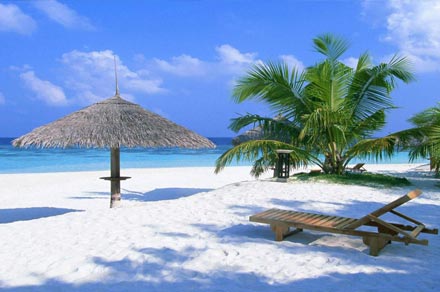
The Beaches of Costa Rica are the most beautiful in the world and has become a number one destination for lovers of the sea. Costa Rica has over 1,770 km (1,100 miles) of coastline of which 65% consists of its borders. Costa Rica has 2 coasts, the Pacific and the Caribbean. The Pacific boasts great surfing and many sandy beaches. Tamarindo, Playa de Coco, Puntarenas and Guanacaste are all surfing hotspot. Many of Costa Rica's best beaches are found throughout the entire Caribbean coast from Limon to Cahuita covering 42 km (26 miles). The area is covered with pristine, natural beaches that have just a few rocks, corals, or seaweeds. Some of the best beaches in Costa Rica are Playa Blanco, Playa Negra and Playa Grande all in Cahuita. Then there is Playa Cocles, Playa Chiquita, Playa Uva and Playa Manzanillo to the south.